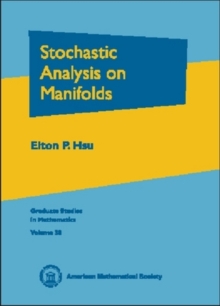
A Modern Theory of Integration Hardback
by Robert G. Bartle
Part of the Graduate Studies in Mathematics series
Hardback
Description
The theory of integration is one of the twin pillars on which analysis is built.
The first version of integration that students see is the Riemann integral.
Later, graduate students learn that the Lebesgue integral is 'better' because it removes some restrictions on the integrands and the domains over which we integrate.
However, there are still drawbacks to Lebesgue integration, for instance, dealing with the Fundamental Theorem of Calculus, or with 'improper' integrals.
This book is an introduction to a relatively new theory of the integral (called the 'generalized Riemann integral' or the 'Henstock-Kurzweil integral') that corrects the defects in the classical Riemann theory and both simplifies and extends the Lebesgue theory of integration.
Although this integral includes that of Lebesgue, its definition is very close to the Riemann integral that is familiar to students from calculus.
One virtue of the new approach is that no measure theory and virtually no topology is required.Indeed, the book includes a study of measure theory as an application of the integral.
Part 1 fully develops the theory of the integral of functions defined on a compact interval.
This restriction on the domain is not necessary, but it is the case of most interest and does not exhibit some of the technical problems that can impede the reader's understanding.
Part 2 shows how this theory extends to functions defined on the whole real line.
The theory of Lebesgue measure from the integral is then developed, and the author makes a connection with some of the traditional approaches to the Lebesgue integral.
Thus, readers are given full exposure to the main classical results.The text is suitable for a first-year graduate course, although much of it can be readily mastered by advanced undergraduate students.
Included are many examples and a very rich collection of exercises.
There are partial solutions to approximately one-third of the exercises.
A complete solutions manual is available separately.
Information
-
Out of Stock - We are unable to provide an estimated availability date for this product
- Format:Hardback
- Pages:448 pages, Illustrations
- Publisher:American Mathematical Society
- Publication Date:30/03/2001
- Category:
- ISBN:9780821808450
Information
-
Out of Stock - We are unable to provide an estimated availability date for this product
- Format:Hardback
- Pages:448 pages, Illustrations
- Publisher:American Mathematical Society
- Publication Date:30/03/2001
- Category:
- ISBN:9780821808450










